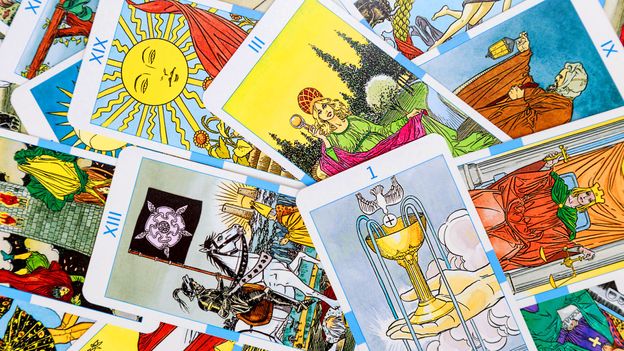Why magic’s secret symbols fascinate us


The book Tarot features more than 500 decks, spanning six centuries – and shows how different artists have put their own unique stamp on tarot. The Strength card, symbolising bravery in adversity, may typically feature a woman with a lion, but depending on the artist, that woman might be an Aztec warrior, Egyptian Queen or – in the 2015 Black Power Tarot – Tina Turner. She might be stroking the lion, riding on its back or holding its jaw open. It might not be a lion at all, but a grizzly bear, or an alligator. Yet all will convey a sense of inner strength overcoming obstacles. ”It’s really thrilling to see how people have interpreted and then completely changed it, but there’s still that unifying archetype,” says Hundley.
The oldest known existing tarot cards, the Visconti-Sforza deck, date back to 15th-Century Italy. Created for aristocrats, the cards are hand-painted, intricate pieces of art, featuring figures that would go on to become key tarot archetypes. Tarot originated as a parlour game, and it wasn’t until the 18th Century that the cards became a tool for divination.
The most famous – and influential – tarot was created in 1909 when occultist Arthur Edward Waite commissioned artist Pamela Colman Smith to design a deck. If you’ve only seen one tarot deck, it’s likely to be this, the Rider-Waite-Smith (often referred to as just the Rider-Waite) – still the most widely used in the world today. Both Colman and Waite were members of the secret society the Hermetic Order of the Golden Dawn, devoted to the study of the occult (other members included Bram Stoker and WB Yeats). Their deck reimagined and modernised tarot, reinterpreting the imagery to create a deck intended to reflect the reader using it. “The pictures are like doors which open unexpected chambers, or like a turn in the road with a wide prospect beyond,” wrote Waite in the accompanying book, The Pictorial Key to Tarot.








